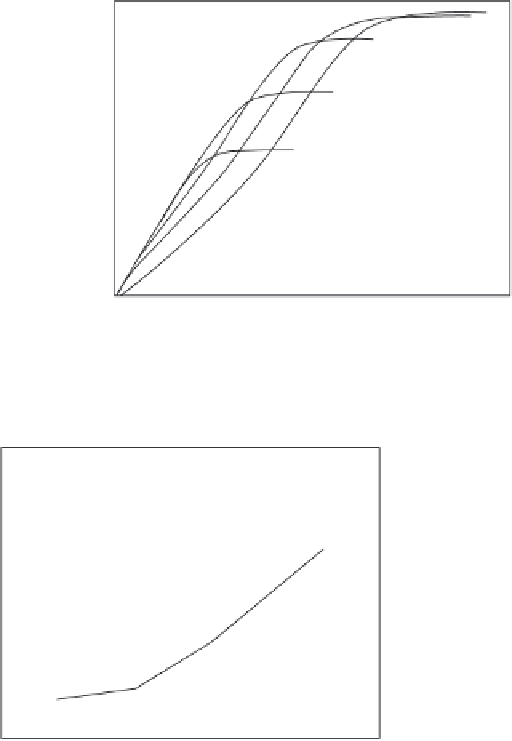Geoscience Reference
In-Depth Information
Wu and Chao
[82]
have studied systematically the gel aging through Raman
spectroscopy and derivative thermogravimetry DTG (Digital TV Group).
Figures 6.11 and 6.12
show the room temperature for Raman spectra of the gel
phase obtained during aging at ambient temperature and reaction at 115
C during
the synthesis of faujasite zeolites
[82]
. In the early stages of aging, insoluble silica
and unreacted Al
Þ
4
441 cm
2
1
ð
OH
retained in the gel, A, give bands at
and
B
Þ
4
species in the solid
part and Al species in the solution part of gel A are found almost to disappear, and
this disappearance might be a result of the formation of the aluminosilicate hydro-
gel, which is considered to be the precursor of zeolite. Upon heating, the insoluble
silica dissolves progressively so that the concentration of silicates in solution mea-
sured by inductively coupled plasma-atomic emission spectroscopy ICP-AES
617 cm
2
1
, respectively. At the end of aging, the Al
ð
OH
B
E
D
0.00080
C
B
0.00060
A
0.00040
0.00020
0.00000
0.00
2.00
4.00
Time (h)
6.00
8.00
10.00
Figure 6.9 Evolution of the average zeolite crystal size with time
[81]
.
Figure 6.10 Number of
nuclei formed per day by
dividing values of Ns
[81]
.
20.00
Seed size = 1.0
×
10
-6
cm
15.00
10.00
5.00
0.00
0
5
10
Time aged (days)
15
20












































